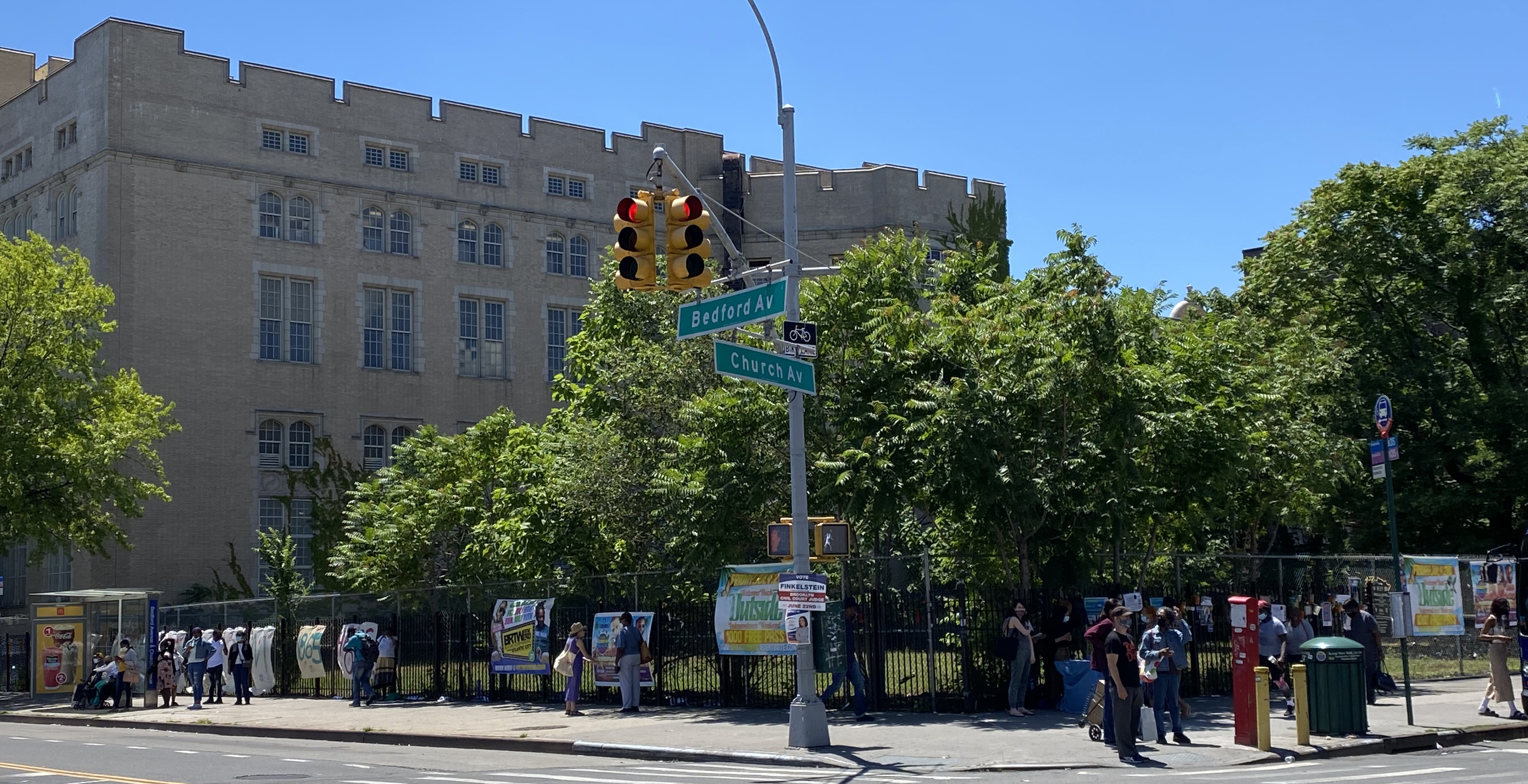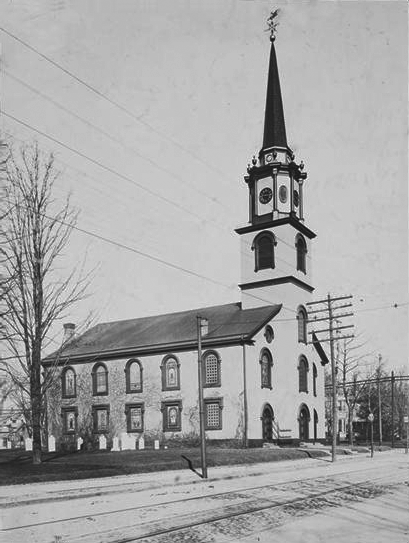
 Housing Preservation & Development311
Housing Preservation & Development311 Search all NYC.gov websites
Search all NYC.gov websites
Flatbush African Burial Ground Remembrance and Redevelopment
Flatbush African Burial Ground Remembrance and Redevelopment
Flatbush African Burial Ground Remembrance and Redevelopment

Site History
The Bedford-Church site occupies land originally inhabited by the Lenape and has been a part of Flatbush since it was settled by Europeans in 1651 as a village center for local farms. At that time, many Dutch families in Flatbush owned enslaved Africans (in 1800, between 70 and 80 percent of all Flatbush families enslaved at least one person).
The City’s archaeological research about the Flatbush African burial ground began in 2001 and is an ongoing and evolving process. As is typical of archaeological research, new primary and secondary source documents become accessible over time, which is why ongoing research by the FABGRR Task Force and Descendant Community is critical to uncovering the full history of the burial ground. Historical documents, and especially primary source documents, that reference the Flatbush African burial ground are scarce and not well detailed. Records about enslaved people from the 18th and 19th centuries were scant, or often lacked personal information. This lack of records kept by Flatbush landowners reflects the gross imbalance of power at the time and was not due to poor record keeping by those that were enslaved. Those in power diminished the validity of enslaved people and often did not keep records relevant to their lives and deaths. However, archaeological analysis and historical research of the site, do confirm that people of African ancestry were buried adjacent to and on a portion of the site.
This project provides a powerful opportunity to shed light on the sacred history of the African burial ground. The Flatbush African Burial Ground Remembrance and Redevelopment Task Force is actively leading an effort to build community-based recommendations on how to acknowledge the site’s history through a future memorial, in addition to the affordable housing project with youth-focused programming.
The Flatbush Reformed Church founded in 1654 and still in existence, was the only Church in Flatbush for a long period of time. When enslaved people in Flatbush died, most were not permitted to be buried in the Flatbush Reformed Church cemetery. At an unknown time, a separate African burial ground was established on land the Church owned at the intersection of what is now Church and Bedford Avenues.
The African burial ground was not depicted on early maps of Flatbush, but a 2020 discovery of a map of the area from 1855, from The Center for Brooklyn History’s archives, established the known geographic extents of the African burial ground. Georeferencing to place the burial ground on a modern map, which has a high degree of accuracy, shows that it was located adjacent to and on a northeast portion of the site. From additional historical documents, it is believed that the burial ground was in use for new burials from sometime in the 17th century through no later than the early 1840s.

There is evidence that the burial ground may have once been larger and extended further west along what is Church Avenue today. Historians reported that human remains were found in 1842 when the basement of Flatbush School No. 1 was excavated in what is now Church Avenue, as well as when Bedford Avenue was laid out across the African burial ground in the 1860s. In both of these cases, the human remains were reportedly removed and reburied on land owned by the Flatbush Reformed Church near Holy Cross Cemetery.
An 1875 article reported that human remains were discovered when the foundation for the Van Dyke house, once located at the southeast corner of the intersection of Church and Bedford Avenues, was excavated in the late 1800s. Newspaper articles from 1890 and 1904 report that human remains were discovered during separate sewer excavations on Bedford and Church Avenues, respectively, near the intersection.

Two definitive names of people who were buried at the Flatbush African burial ground have been found to date. In a book published in 1881, Sara Hicks, a formerly enslaved woman who lived in the Zabriskie house about a block west of the site, was quoted as saying that her twin sister Phyllis Jacobs was buried at the African Burial Ground. Also, The Long Island Star in 1810 published an obituary for a roughly 110-year-old formerly enslaved woman named Eve, who was buried in the African Burying Ground in the Village of Flatbush.
Beginning in December 2020, the project team worked with Historical Perspectives, Inc., an archaeological firm, on archaeology and descendant community research about the Flatbush African Burial Ground. HPI’s report uncovered and goes into more depth on much of the historical information on this page. The report was completed in July 2021 and is available on LPC’s website and below. Research into the history of the burial ground and those buried there is ongoing, and research volunteers can contribute information here or by contacting the project team.
Physical evidence of the African burial ground was affirmed through archaeological testing at the site in 2001 (due to planned renovations by the School Construction Authority of the former school on site). At the time, disarticulated fragments of human remains were uncovered in the upper, disturbed layer of soil along the northern edge and northeast corner of the site, aligning with the historical boundaries of the now known burial ground extents from the 1855 map and the evidence that it extended west.
A physical anthropologist conducted analysis of the disarticulated human remains uncovered at the site and affirmed the likelihood that the human remains are of African ancestry. The human remains were reburied at the Flatbush Reformed Church in their cemetery, located one block west on Flatbush Avenue.

All subsurface work has since halted at the site until an Archaeological Work Plan and Unanticipated Discoveries Protocol are in place, which are regulatory documents required by New York City Landmarks to ensure that additional human remains that may be discovered in the future will be appropriately and sensitively honored. In 2019, under the direction of Council Member Mathieu Eugene and Mayor de Blasio, a Community Engagement Protocol was developed by NYCEDC with Historical Perspectives, Inc., an archaeological firm, as an initial step to advance these regulatory documents. The FABGRR Task Force was formed by Council Member Mathieu Eugene and Brooklyn Borough President Eric Adams to guide the development of recommendations regarding the sensitive handling of human remains and establish goals for future memorialization at the site, the former of which will be folded into the regulatory documents governing the sensitive handling of human remains and artifacts.
The site’s multi-century history is also deeply rooted in promoting education in the neighborhood, first as its original school (Flatbush School No. 1 in the mid-19th century), followed by PS 90 through the mid-20th century, and then by the Yeshiva University Boys’ High School, and lastly as the Beth Rivkah Institute.
Following the site’s closure as an educational facility, the site was designated a New York City Landmark in 2007, and this status stands today, even after the school structure was ultimately demolished in 2015 due to hazardous structural conditions. Artifacts found during excavation related to PS 90 were collected and curated for presentation at the nearby Erasmus Hall Campus, and were later moved to the NYC Archaeological Repository: the Nan A Rothschild Research Center.
Archaeological Documents and Presentations:
- Task Force Meeting 1 Site History Presentation
- Stage 1A Archaeological Assessment Report
- Stage 1B Archaeological Investigation
- NYC Landmarks Preservation Committee Designation (2007)
- Protocol for Community Engagement and Unanticipated Discoveries Plan (2019)
- Study to Identify the Descendant Community (2021)
- NYC Archaeological Repository: the Nan A Rothschild Research Center


